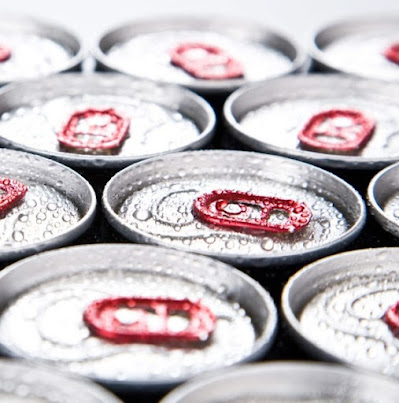Soft drinks rank as America's favorite beverage segment, representing 25% of the total beverage market. Soft drinks include all drinks made from water or mineral water, sugar, aromas, and essences, and usually contain carbon dioxide.
The first step in the production of soft drinks is the syrup preparation. The syrup is a sugar and water solution, in which sugar or glucose can be used, while diet drinks are prepared using sweeteners or a combination of sugar and sweeteners.
The dissolved sugar and flavor concentrates are pumped into the dosing station in a predetermined sequence according to their compatibility. The ingredients are conveyed into batch tanks where they are carefully mixed; too much agitation can cause unwanted aeration. Conventional soft drinks contain 90 percent water, while diet soft drinks may contain up to 99% water.
The syrup may be sterilized while in the tanks, using ultraviolet radiation or flash pasteurization, which involves quickly heating and cooling the mixture. Fruit based syrups generally must be pasteurized.
Carbon dioxide (CO2) is added to soft drinks during the bottling process to give the drink its fizz. Carbon dioxide adds that special sparkle and bite to the beverage and also acts as a mild preservative. The solubility of carbon dioxide gas in water depends on the pressure and the temperature of the water. The colder the water, the higher the solubility. In order for carbonation (absorption of carbon dioxide to occur, soft drinks are cooled using large, ammonia-based refrigeration systems.
The carbonation of soft drinks varies from 1.5 to 5 g/L. Carbon dioxide is supplied to soft drinks manufacturers either in solid form (as dry ice) or in liquid form maintained under high pressure in heavy steel containers.
The finished product is transferred into bottles or cans at extremely high flow rates. Empty bottles and cans are transported automatically to the filling machine via bulk material handling equipment. The containers are immediately sealed with pressure-resistant closures, either tinplate or steel crowns with corrugated edges, twist offs, or pull tabs.
Because soft drinks are generally cooled during the manufacturing process, they must be brought to room temperature before labeling to prevent condensation from ruining the labels. This is usually achieved by spraying the containers with warm water and drying them.
Filling are all performed almost entirely by automatic machinery. Returnable bottles are washed in hot alkaline solutions for a minimum of five minutes and then rinsed thoroughly. Single-use containers are usually air- or water-rinsed before filling.
The majority of soft drinks are filled under pressure into bottles (glass or PET) or cans, achieving a maximum CO2-content of 8 grams. After filling, the bottles are immediately closed off with a (sterile) crown cap or a cap with plastic layer.
After the filling process, the soft drinks are sent to the distributor, who can repack the drinks in smaller quantities or deal directly to the final customers.
Soft drinks bottling process
Just another blog about food processing and the important of food processing. It is about the conversion of raw materials or ingredients into the consumer product. Food processing also can be defined as the branch of manufacturing that starts with raw animal, vegetable, or marine materials and transforms them into intermediate foods stuff or edible products through the application of labor, machinery, energy, and scientific knowledge.
Friday, March 11, 2022
Most Popular Articles
-
The canning of fishery products may be divided into a number of definite steps applying equally well to all types, although details of metho...
-
Yes, alcohol can indeed be made from dates using a traditional process known in some cultures as Dakhai. This method utilizes the natural s...
-
The process of making chocolate liqueur is a meticulous craft that combines the rich flavors of chocolate with the distinctive warmth of alc...
-
Wide arrays of canned foods are available in supermarkets today, and for many families, these foods can help make quick and convenient meals...
-
Food Processing Food processing began thousands of years ago when early man preserved his harvest, fresh meats and fish for winter reserves ...





